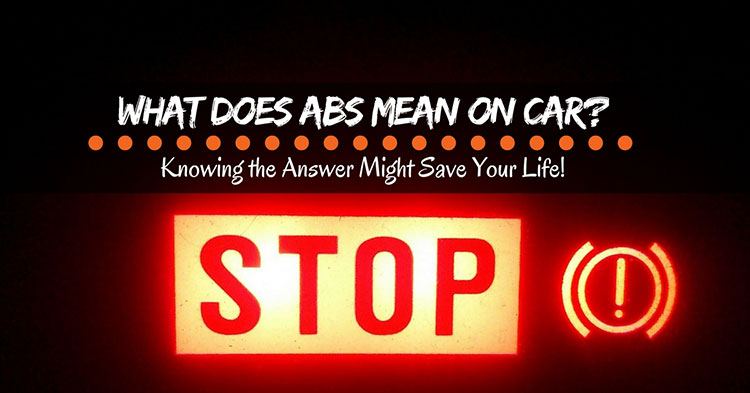
What Does ABS Mean on Car? Knowing the Answer Might Save Your Life!
Are you curious how you are able to handle your car’s steering wheel easily and make smooth brakes when you need to? The ABS or anti-lock braking system has this very special purpose of helping you control your vehicle smoothly especially during slippery situations. ABS also helps decrease the stopping distance both on dry and slippery surfaces.
More...
I found it very helpful to monitor any warning signals illuminating on my dashboard because it tells me if my car is safe to drive or not. ABS is among the signals that illuminate on the dashboard and if you want to know what this signal is all about, read on below and I will explain to you what it means and why it’s important.
What is Anti-lock Braking System?
The ABS or anti-lock braking system is a safety feature included in the design of modern vehicles that prevents wheel lock-up during emergency brakes. The system maximizes the braking of your car while making sure you are in control of the steering wheel. This helps you stabilize the car and prevent skidding.
The ABS system utilizes sensors to monitor the speed of each wheel of your vehicle. When the sensor detects that one of the wheels is about to lock, it activates the relief valve that helps reduce the break pressure. Based on the principle of cadence braking, the ABS allows you to regain steering control with maximum brake pressure to avoid accidents.
How Does the ABS Work?
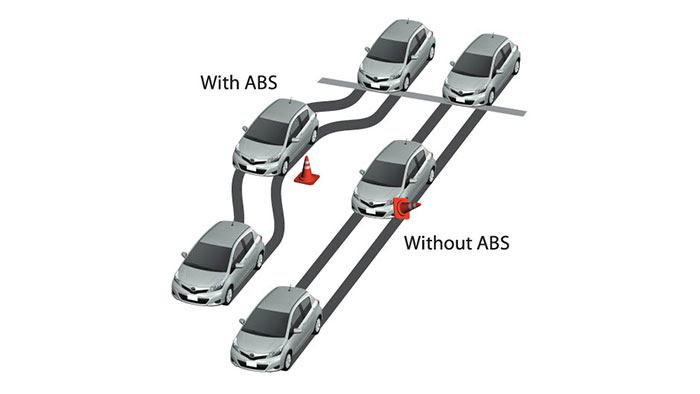
Via autointhebox.com
As what we have mentioned above, it is very important to monitor the rotational speed of the four wheels. With the help of sensors, the computer system of your car can help monitor the signals from the wheels and the brake pedal. Any abnormalities detected by the sensors will be flashed on your dashboard to warn you of potential issues.
Sensors on the wheels help to detect if one of the wheels start to lock or stop. When you press the brake pedal, a hydraulic fluid is released into the system to reduce the braking of the wheel. This event allows you to have stable control on the steering wheel and prevent skidding.
Take note also if you hear a squeaking sound when turning the steering wheel or applying the brakes since it could indicate additional problems.
Common Reasons Why the ABS Light Turns On
When the ABS light is illuminated on your dashboard, it could mean a number of potential issues present in the anti-lock braking system. Take note that when the ABS has some type of fault, your car won’t be able to help you in the event of skidding.
Some of the common culprits why your ABS light is one are the following:
- Fluid level that is lower than normal in the ABS fluid reservoir
- Faulty wheel sensors
- Electrical wiring problems
- Standard bulb check
- Failing pump due to a faulty power relay
- Issues with the solenoid
What to Do If the ABS Light Is On
Since I have mentioned above that there are many possible reasons why your ABS light is on, the best thing you can do first is to determine the specific problem so that solutions can be applied right away.
The ABS illuminated on your dashboard can have a stable or blinking pattern of light and each may tell a different issue. Your car system should be able to store a trouble code that points to the source of the problem.
I would suggest you do the following if your ABS light is on:
1. Check for the ABS Trouble Code
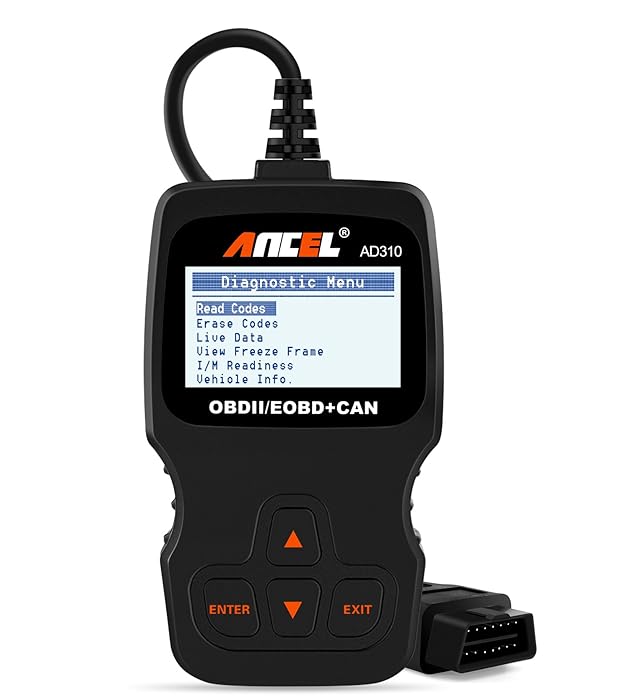
Try to retrieve the trouble code from your car system to know the source of the issue. You will find a code reader/ scanner handy for this task.
Under the dash, plug the OBD scan tool and turn your key on (don’t start the engine). You will soon read displays on the scanner asking you to fill in some information, such as the engine type, model of your vehicle, and the VIN. Simply follow the instructions you see on the screen.
Later on you will be asked with an option to check the trouble codes. Choose this option and record the trouble codes for your reference later on when making repairs. You may check your car manual or visit a website where you can check the meaning of the trouble codes, such as the one included on this page.
I have found a video below which will help you how to use an OBD scan tool to retrieve the trouble codes:
2. Check for Burned Out Bulb

Check other light signals if your ABS light is on, such as a burned out bulb. A functioning light bulb will help you know if there’s an existing problem with your car system.
Some symptoms commonly associated with a burned out bulb include a change in the brightness or a bulb that does not illuminate when you start your engine. There’s no way you can tell if your car is having issues or not without a functioning light bulb.
3. Check the Brake Fluid on the ABS
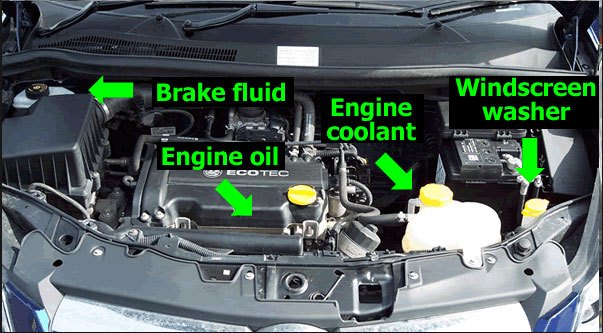
Via drivingtest.uk.com
A low brake fluid can cause your anti-lock braking system to malfunction. I recommend you check this out and if the level is low, you need to top it off with the help of a mechanic or do it yourself. Just remember that it is very critical to know the type of brake fluid for your car (since some brake fluids are not compatible).
First you should locate where the brake fluid box is in order to check the brake fluid level. The location may depend on what your car model is. In general, you may find the brake fluid reservoir in front of the firewall on the driver’s side.
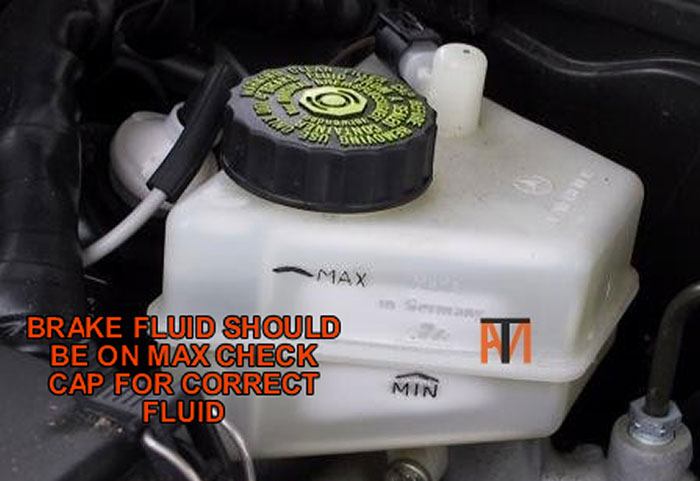
Via askthemechanic.co.uk
One more thing you should know – the brake fluid is hygroscopic. If you left the brake fluid open for a long time, it will absorb the moisture from the air and can cause difficulty in braking or stopping your car. Thus, I will not recommend you to use a brake fluid left inside an opened bottle or container for a long time.
4. Check the Sensors and Electrical Wirings

Corrosion and contaminants can greatly affect the performance of sensors and electrical connectivity. I would recommend you to include checking these the moment you notice an issue with your ABS. Make sure the sensors are screwed tightly, the electrical wires are not loose, and the components are free of dirt.
Using a multimeter, you can also check your wheel sensors if they are still in good condition. Simply turn the device on and set the dialer to the ohm setting (since we will be measuring the resistance of the sensor).
A good wheel sensor should have around 800 to 1400 ohms reading, depending on your car model. If you get a reading of infinite resistance or other values different from the specifications indicated in your car manual, then it means the sensor is faulty and need to be replaced.
Conclusion!
The anti-lock braking system is a very important feature in your car to save you from accidents during a panic stop event. In this primer, I have shortly explained to you what ABS means on the car, how the system works, and what to do if your ABS signal is on.
Did you find this article interesting? If you do, please let your friends know by sharing this post! I know a lot of car owners need to know what ABS is all about and why it’s very important.
Do you have similar experiences? I’d love to hear your comments below!
Related Posts
Are Dodge Chargers Expensive to Fix?
Fleet Fuel Cards for Optimal Car or Truck Expense Tracking
Top Simple Ways to Improve the Look of Your Car
A look under the hood of Waymo robotaxis
What are toll roads, and how to pay the tolls?

